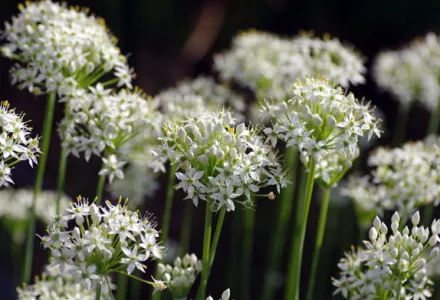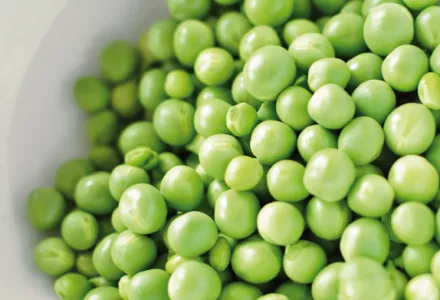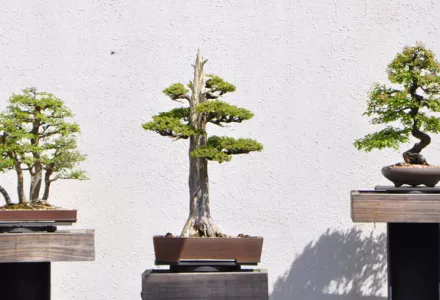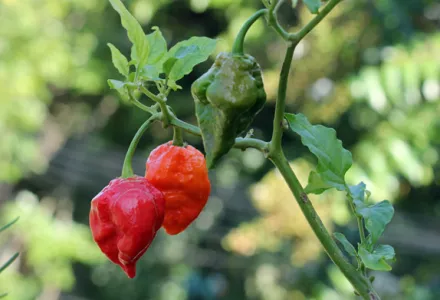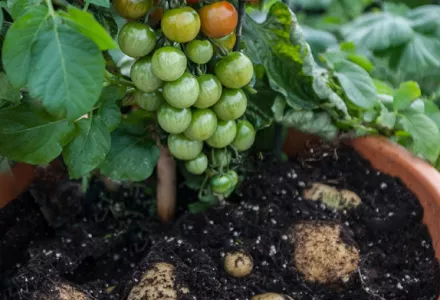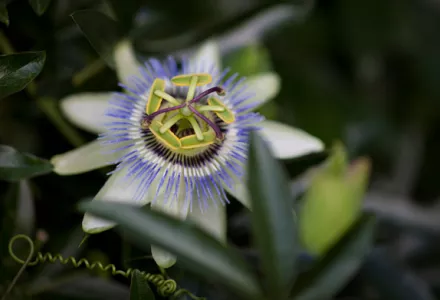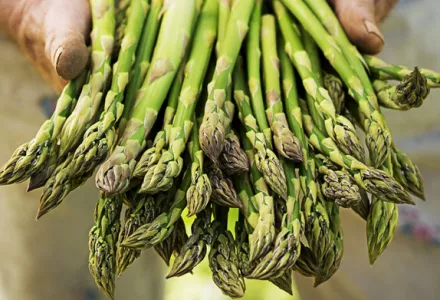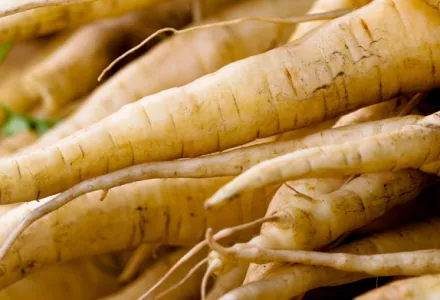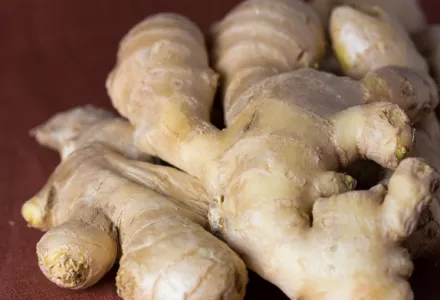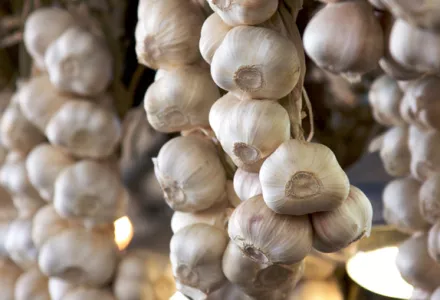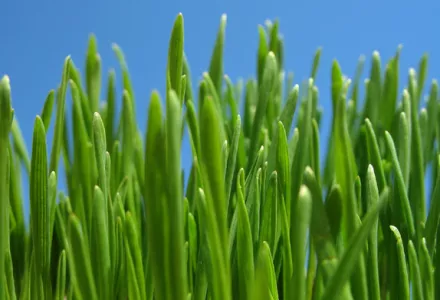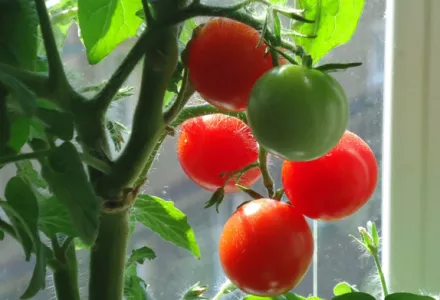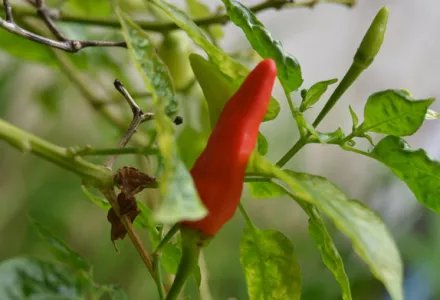Some people say that if a war broke out and we didn’t have enough food, the humble zucchini could save the day. They’re easy and the zucchini is also a definite contender for the speed record of the vegetable world. Add in their healthy virtues and you’ll understand why the courgette could help us out in our hour of need.
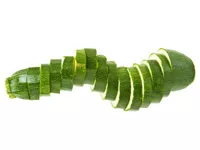
The zucchini: the racing car of the vegetable world. These plants are really fast growers. Sow some seeds today, and you could be harvesting your crop in about 45 to 55 days. These guys are prolific. In some places in the world they plant them in other people’s cars, or put them on their neighbour’s doorstep. They take sacks of them to work along with recipes for zucchini bread, zucchini casserole, and grilled zucchinis. Hell, they even use them as baseball bats because they have no idea how to use their bumper zucchini crops.
Veggie-fruit
The scientific name for the zucchini is Cucurbita pepo, and it is a member of the same family as cucumbers and melons. The inhabitants of Central and South America have been eating zucchinis for several thousand years, but the zucchini that we know today is a variety of summer squash developed in Italy.

In North America, these are known as zucchini, which comes from the Italian zucchino, meaning a small squash. The term squash comes from the Indian skutasquash meaning ‘green thing eaten green’. Christopher Columbus originally brought seeds to the Mediterranean region and Africa.
The French snubbed the zucchini for a long time until chefs learned to choose the smaller fruits, which are less bland and watery. The zucchini and its larger version, the marrow, is actually a fruit, although most people think of them as vegetables – something that many ‘veggie-fruits’ like the tomato, cucumber and squash share with the zucchini. The zucchini doesn’t really care. It’s too busy growing.
Its popularity in Western cuisine is actually quite new. Less than thirty years ago, the zucchini, formerly often referred to as the green Italian squash, would hardly have been recognized. Today, it is not only widely recognized, but a particular favorite of home gardeners.
Despite its prolific growing nature, its popularity is probably due to in large part to its versatility in the kitchen, as a vegetable as well as in breads and desserts.
Great health properties
- The zucchini is not bad for your health either. The zucchini is one of the very low calorie vegetables; it provides only 17 calories per 4oz. It contains no saturated fats or cholesterol. The skin is a good source of dietary fibre that helps reduce constipation and offers some protection against colon cancers.
- And to pull in some big words, Zucchinis have an antioxidant value of 180 Trolex Equivalents (TE) per 4oz. Which might be far below berries but nonetheless, the pods are one of the common vegetables included in weight reduction and cholesterol control programs recommended by dieticians.
- Furthermore, zucchinis are rich in flavonoid polyphenolic antioxidants such as carotenes, lutein and zea-xanthin. These compounds help neutralize harmful oxygen-derived free radicals and reactive oxygen species from the body, helping protect against ageing and various disease processes.
- Zucchinis are a very good source of potassium, containing even more than bananas. Potassium is a heart-friendly electrolyte and helps reduce blood pressure and the heart rate by countering pressureeffects of sodium.
- Fresh zucchini is rich in vitamin A and fresh pods are a good source of vitamin C. In addition, they contain moderate levels of B-complex group of vitamins like thiamin, pyridoxine, riboflavin and minerals like iron, manganese, phosphorus, and zinc.
Grow it yourself
Growing zucchinis is easy, perhaps too easy. Sow the seeds in rows or hills, about 1 inch deep. The row spacing depends on the variety you are planting. In hills, plant four to five per hill and after they have germinated, keep the best two to three zucchini plants. Water the first day and, if there is no rain, every two to three days until they germinate. Zucchini plants like well-drained soil, but will grow in most soils.
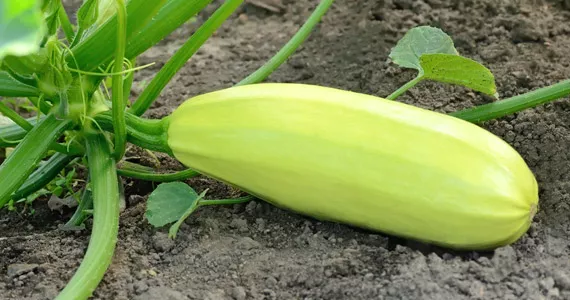
We chuckle at the idea of adding fertilizer to such a prolific grower, but some soils are poor in nutrients. If your soil is poor, or if last year’s crop was less than stellar, a side dressing of fertilizer and regular feedings of fertilizer will improve the health of the plant and the size of the harvest significantly.
Here’s another tip for you: an individual plant can produce fruit right up until the first autumn frost. But, most plants lose their vigor, or fall victim to insect and plant disease. They can also spread right across your garden, with only the growing tip producing new fruits. We recommend a second planting right around the first of July. The second crop will be more vigorous and productive in the second half of the year than older plants.
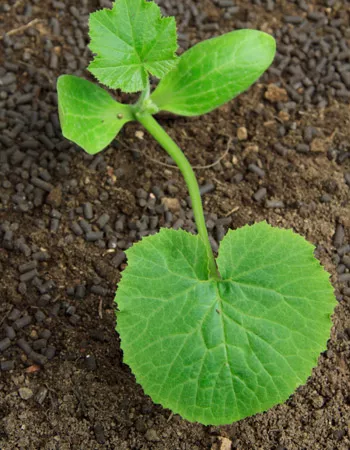
about 1 inch deep. Plant four to five per hill and after
they have germinated, keep the best two to
three courgette plants.
When to pick
Zucchinis are at their best during late spring and summer. The best size for picking zucchinis is 4 – 5 inches long and 1.5-2 inches in diameter. Avoid overly mature, larger fruits, or those with pitted skin or a flabby or spongy texture. Furthermore, avoid those with soft and wrinkled ends as they indicate old stock and dehydration.
Once picked, place the fruits in a plastic bag and store them inside the vegetable compartment of the refrigerator set with adequate moisture. They can be stored for up to 2-3 days.
Zucchini blossoms are also an edible delicacy. In general, blossoms are picked during morning hours when they are fresh and soft.
To prepare, open up blossoms and inspect them carefully for insects. Pull off any calyces attached firmly at the base.
Preparing to cook
Wash the fruits thoroughly in cold, running water just before cooking. Sometimes the fruits may require light scrub at places where dirt is attached firmly. Trim the neck and bases. Peeling zucchinis is not recommended. zucchini plants are not hardy. They are susceptible to frost in the spring and autumn. They are also very susceptible to insects and disease.
Fortunately, these prolific producers manage to produce a bountiful crop even so. If you plan to grow them, make sure your plans include how to use the large quantity you will have. And make those plans elaborate. Like feeding your entire neighbourhood!
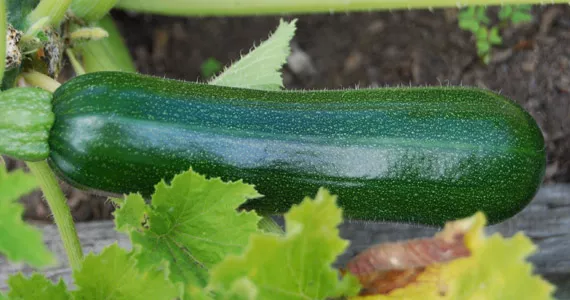
Fast Recipe: marinated zucchini and yellow squash salad
You can create this colorful salad just as fast as your zucchinis grow. It’ll be ready in just 15 minutes and you’ll get an added kick of vitamin A from the fresh basil. Great tip: use the peeler lengthwise rather than horizontally to create long, beautiful green and yellow ribbons of squash.
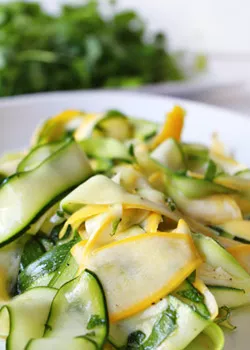
This is what you need:
- 1/2 cup cider vinegar
- 4 teaspoons sugar
- 1/2 teaspoon salt, divided
- 3 zucchinis (about 1 1/2 pounds)
- 2 yellow squash (about 3/4 pound)
- 1 garlic clove, peeled
- 1/2 cup packed fresh basil leaves
- 1 tablespoon fresh lemon juice
- 1 tablespoon extra-virgin olive oil
- 11oz part-skim mozzarella cheese, cut into cubes
Combine the vinegar, sugar, and 1/4 teaspoon salt until the sugar dissolves. Trim the ends of the zucchini and squash; cut into thin ribbons with a harp-shaped peeler. Add to the vinegar mixture. Cover and chill for 2 hours or overnight.
Bring a small pan of water to the boil; add garlic. Remove with a slotted spoon after 1 minute. Rinse under cold water; set aside. Add the basil to the boiling water; immediately remove and rinse under cold water. Reserve 1 tablespoon of cooking liquid. Transfer garlic and basil to a food processor, and add lemon juice, olive oil, reserved water, and the remaining 1/4 teaspoon salt. Process until smooth.
Drain the squash, and divide among 4 plates. Top with cubed mozzarella, and drizzle with basil oil. Now take your time to enjoy. Not everything needs to happen as fast as a zucchini.

